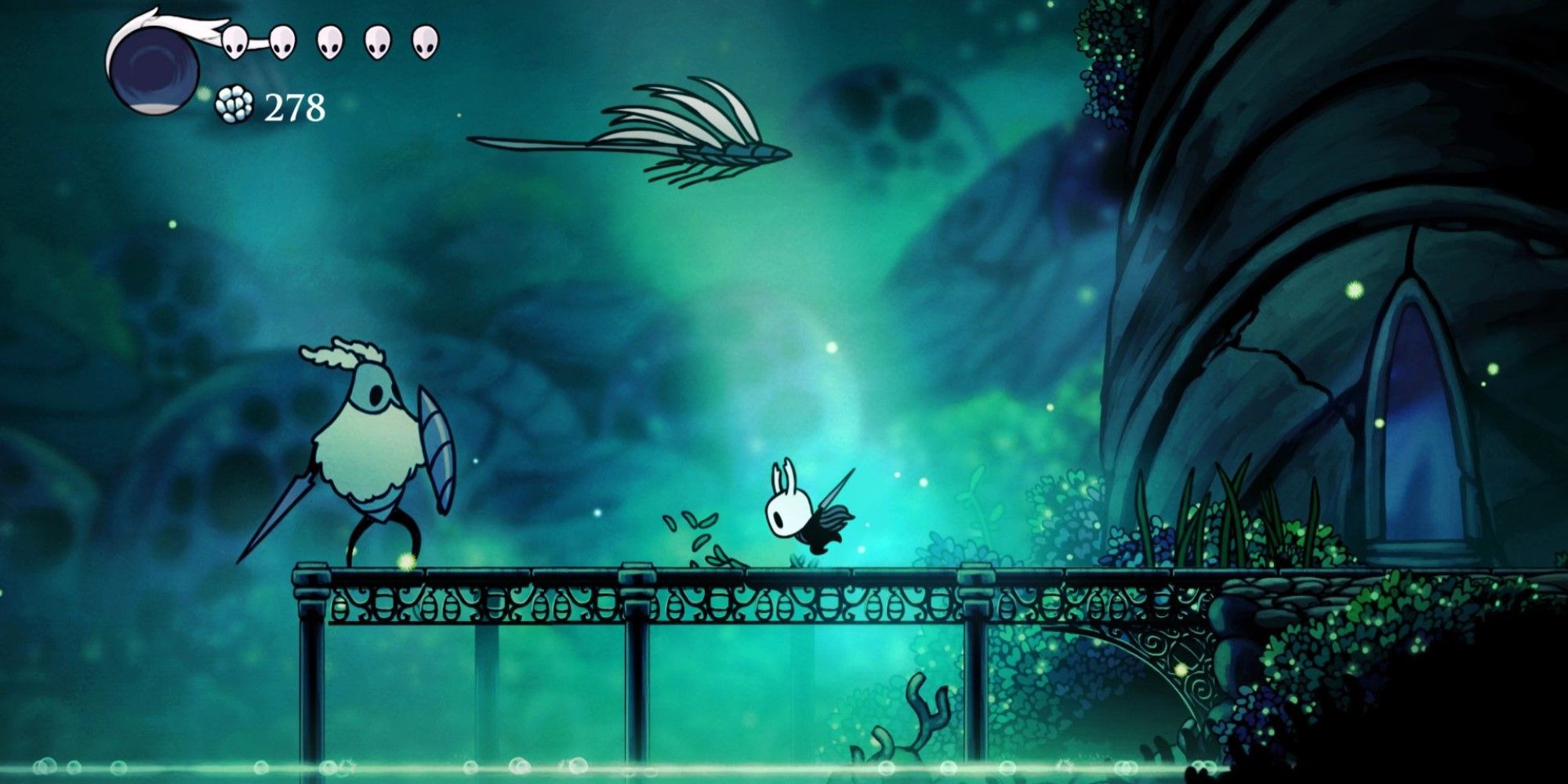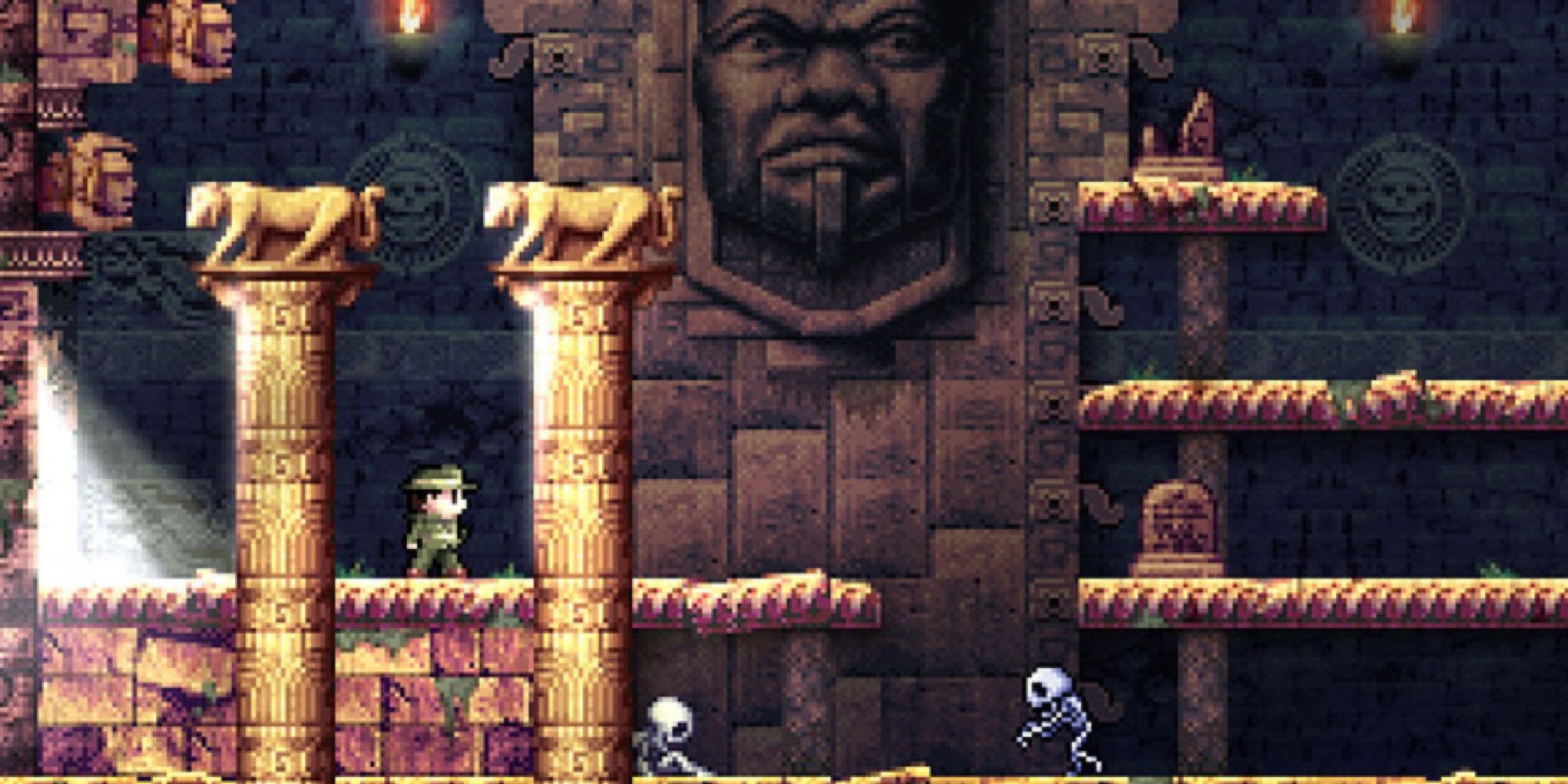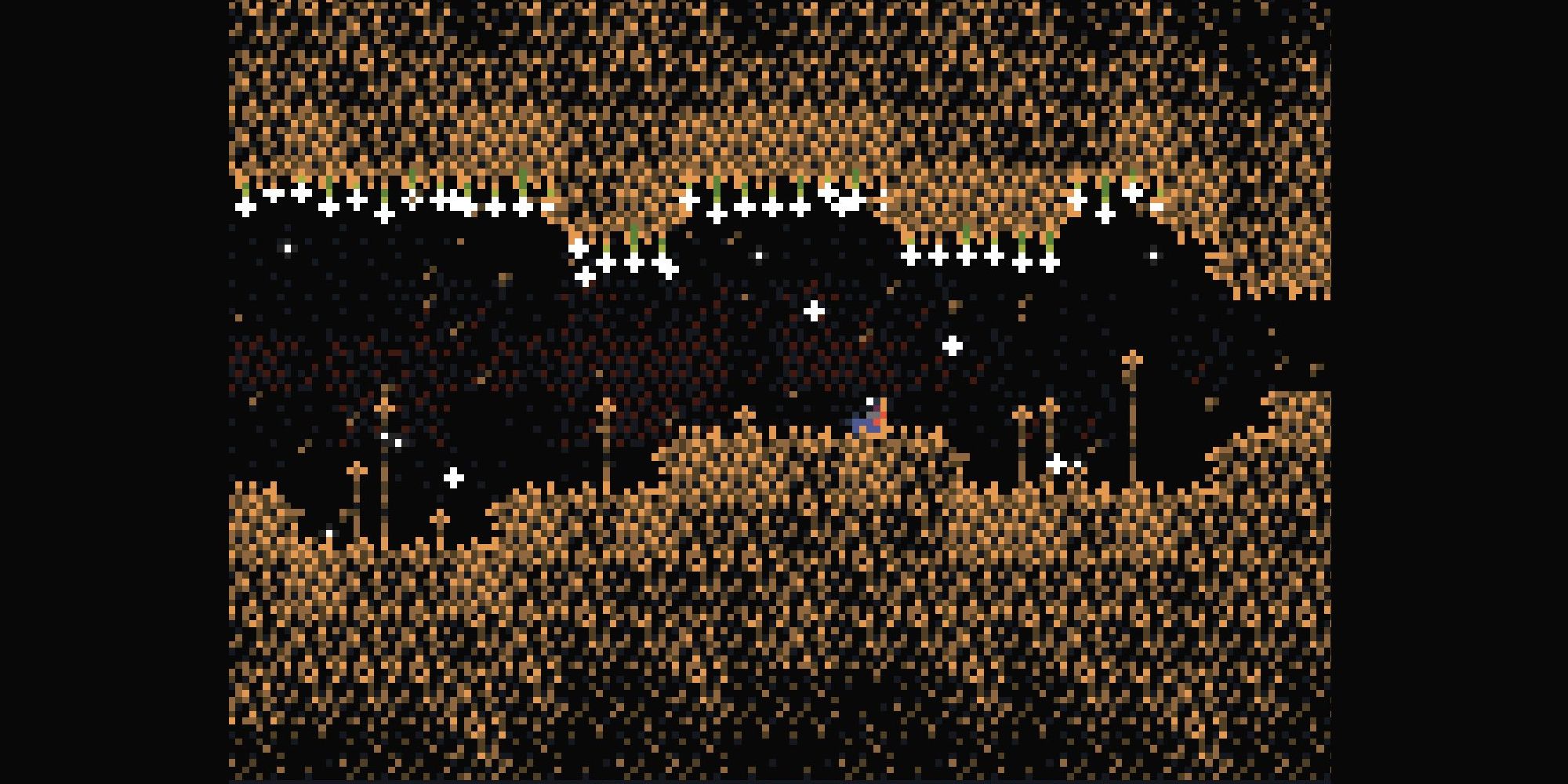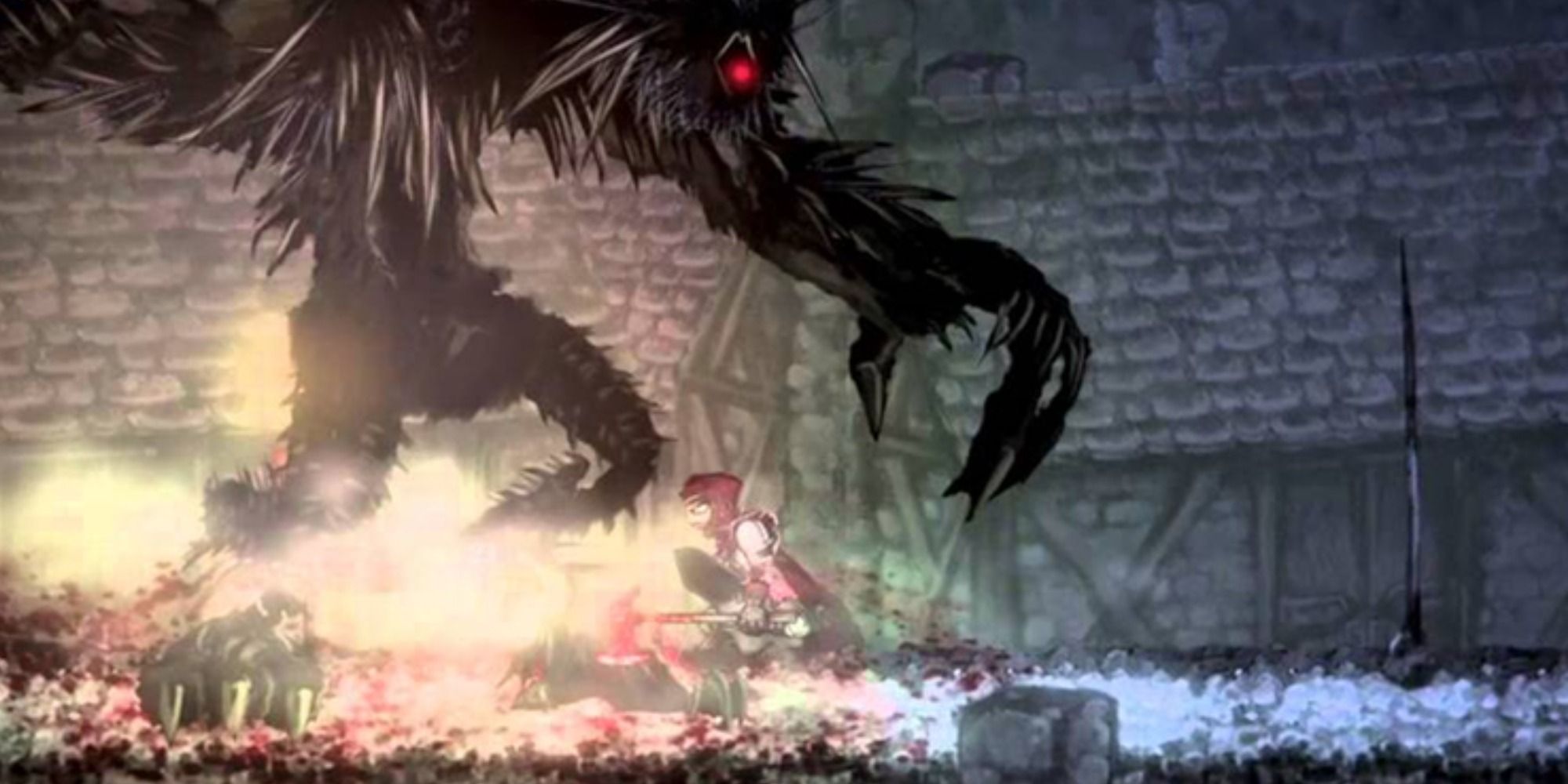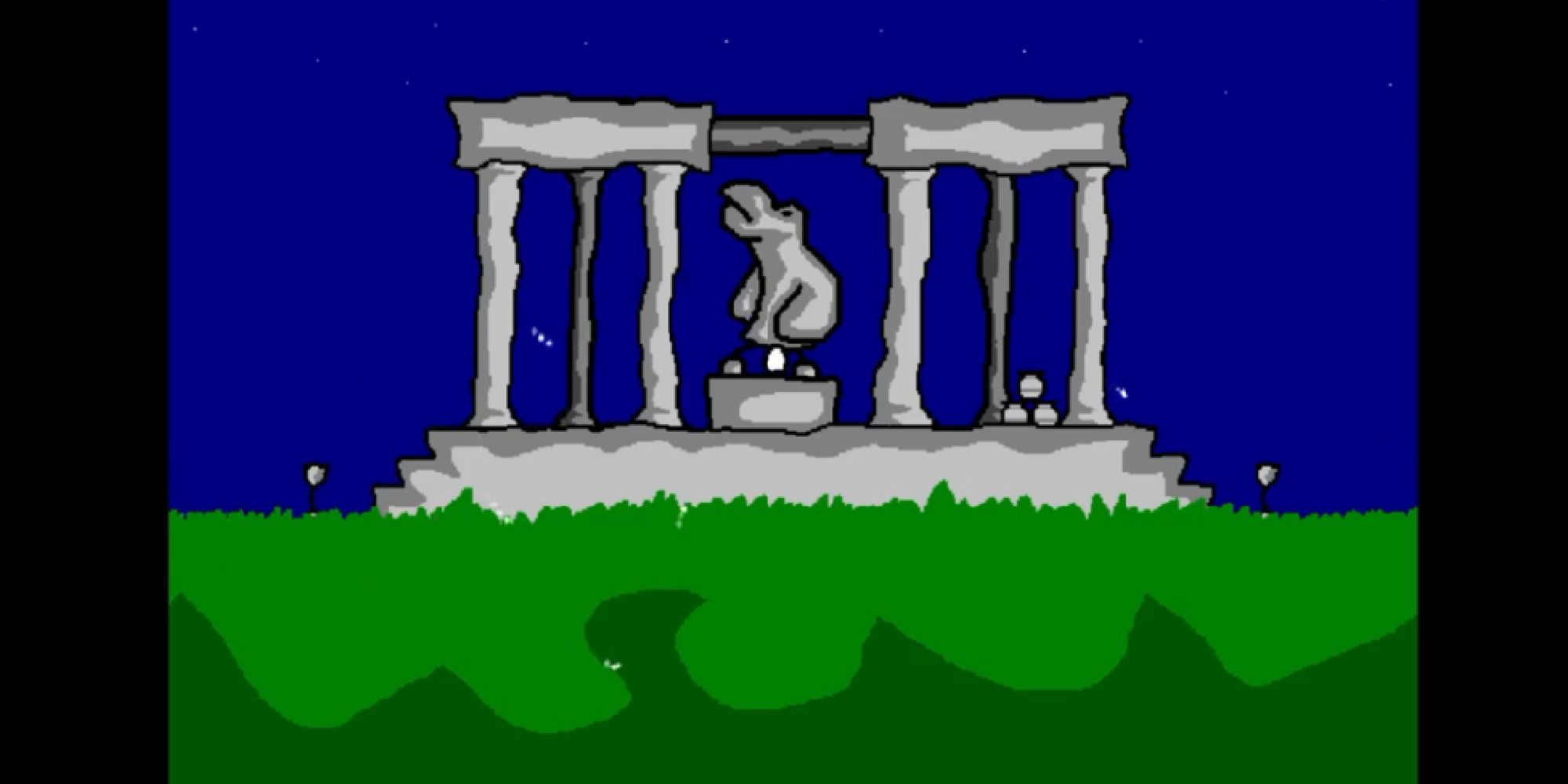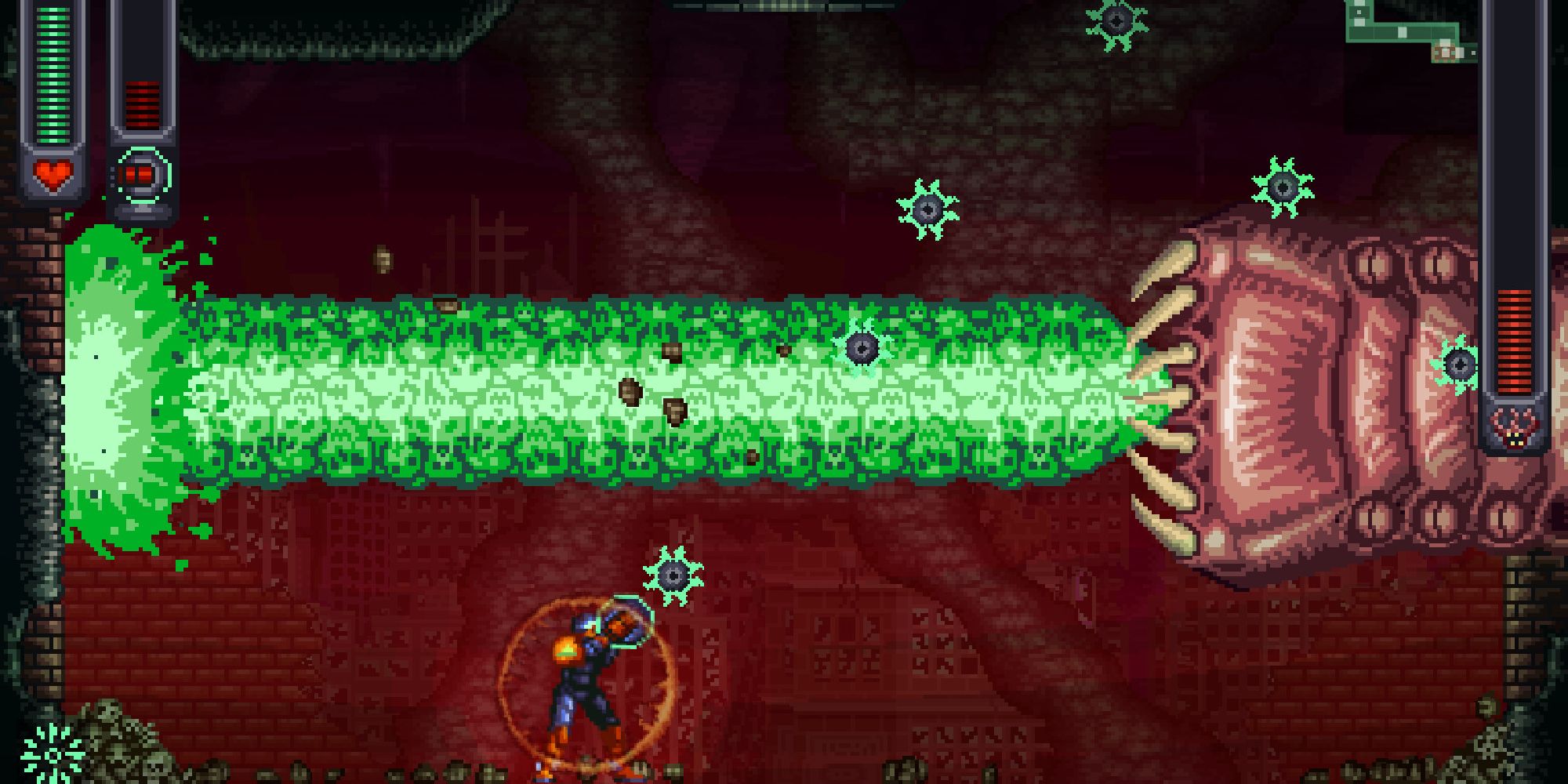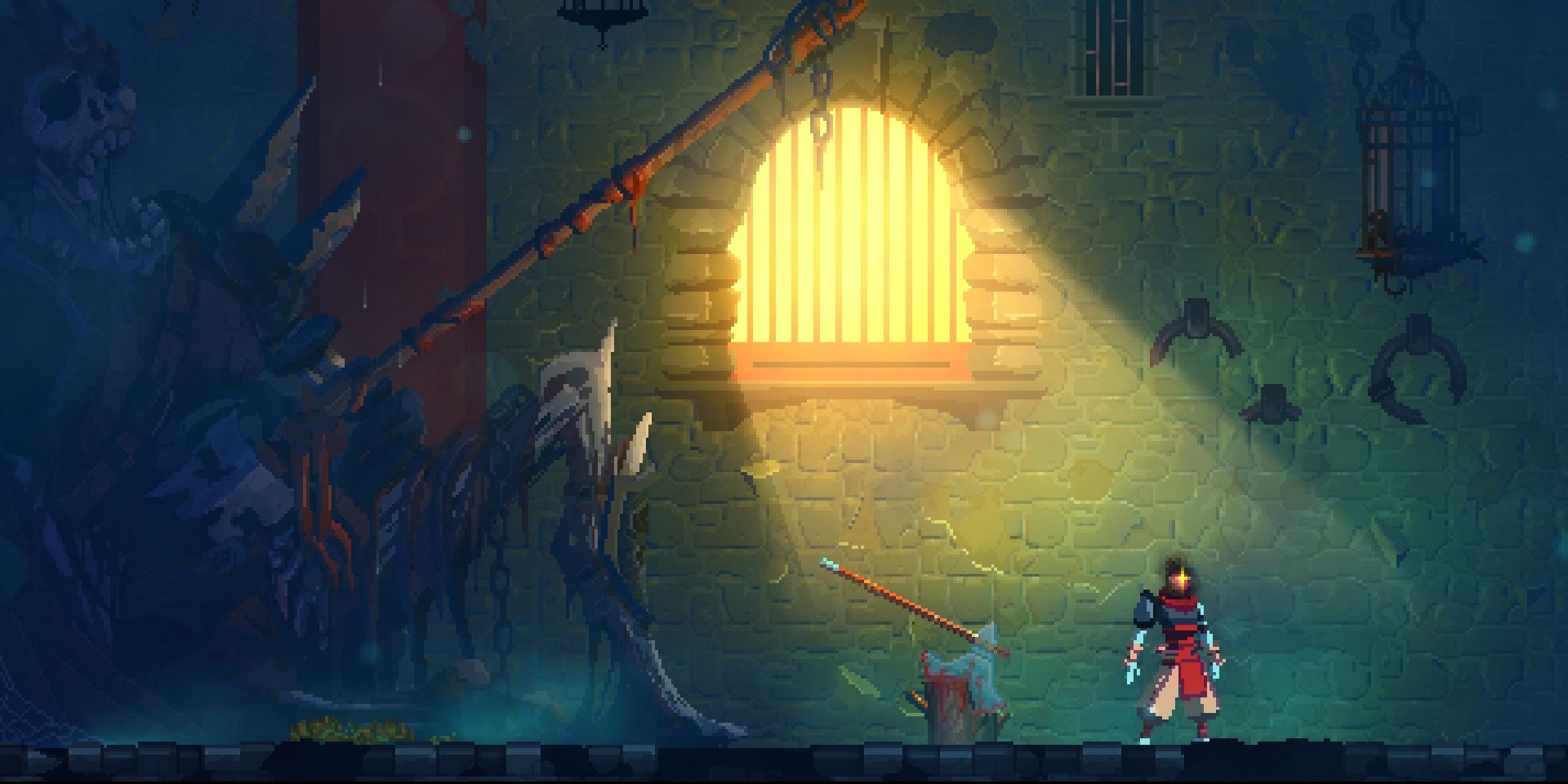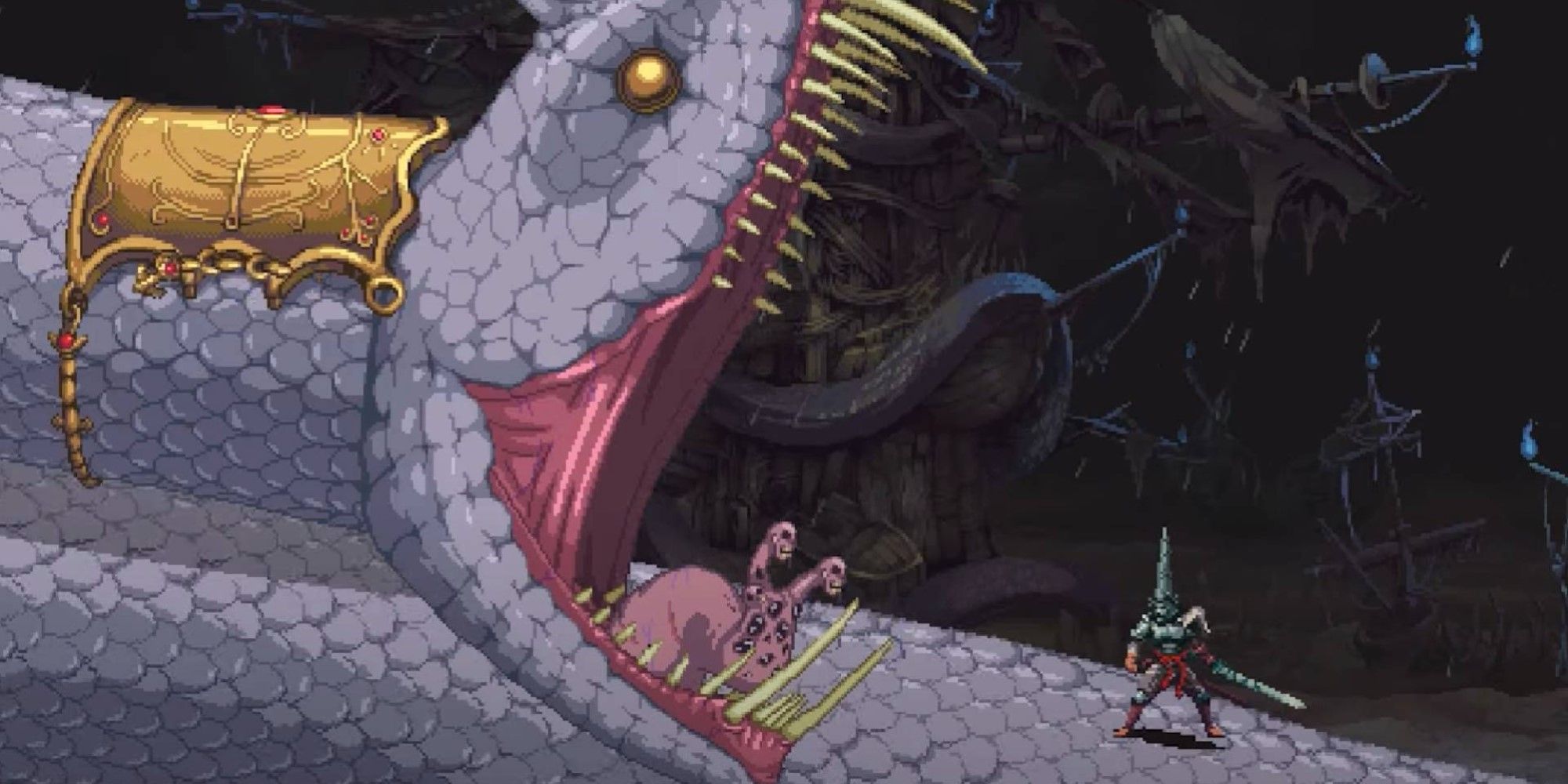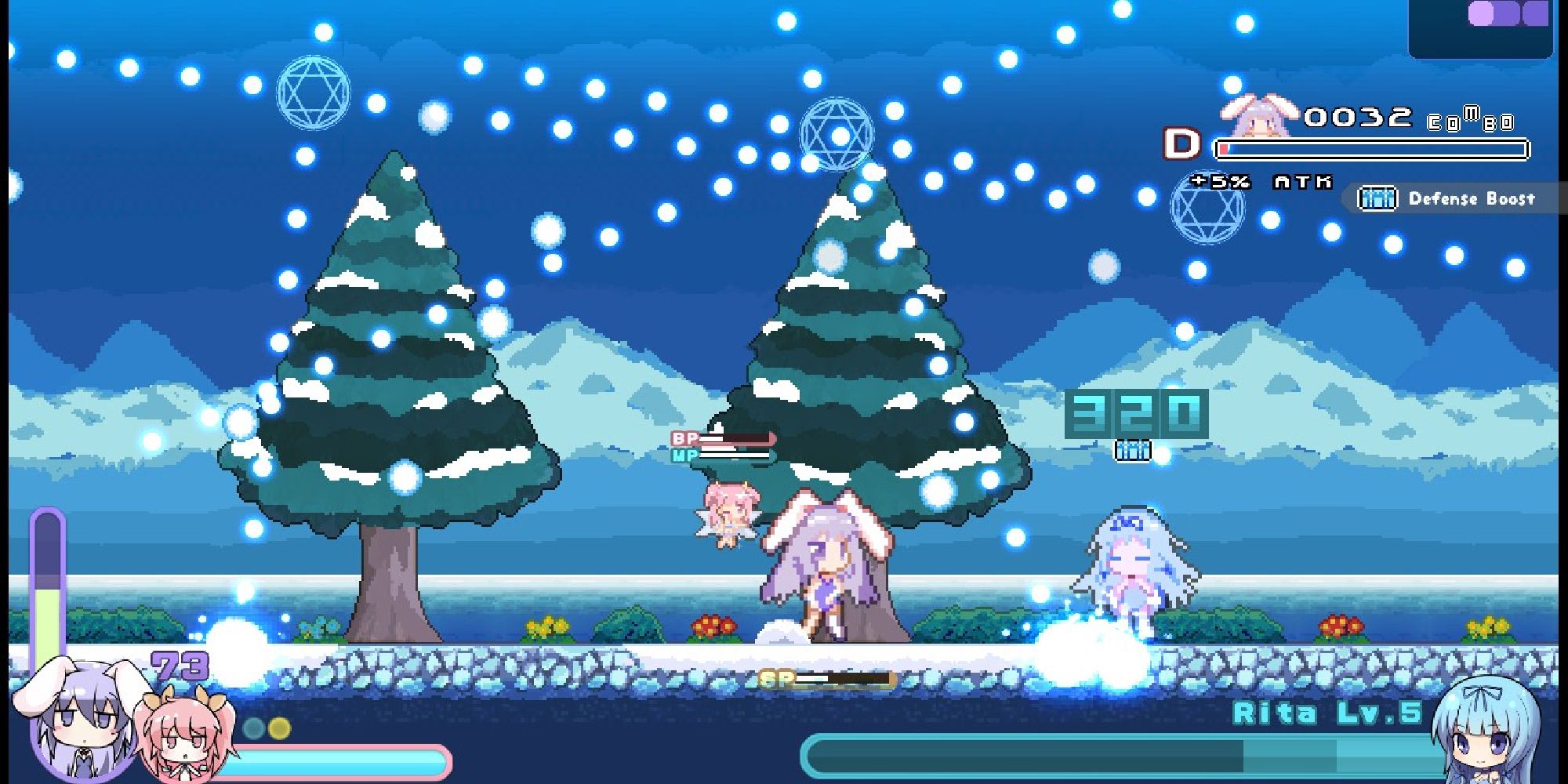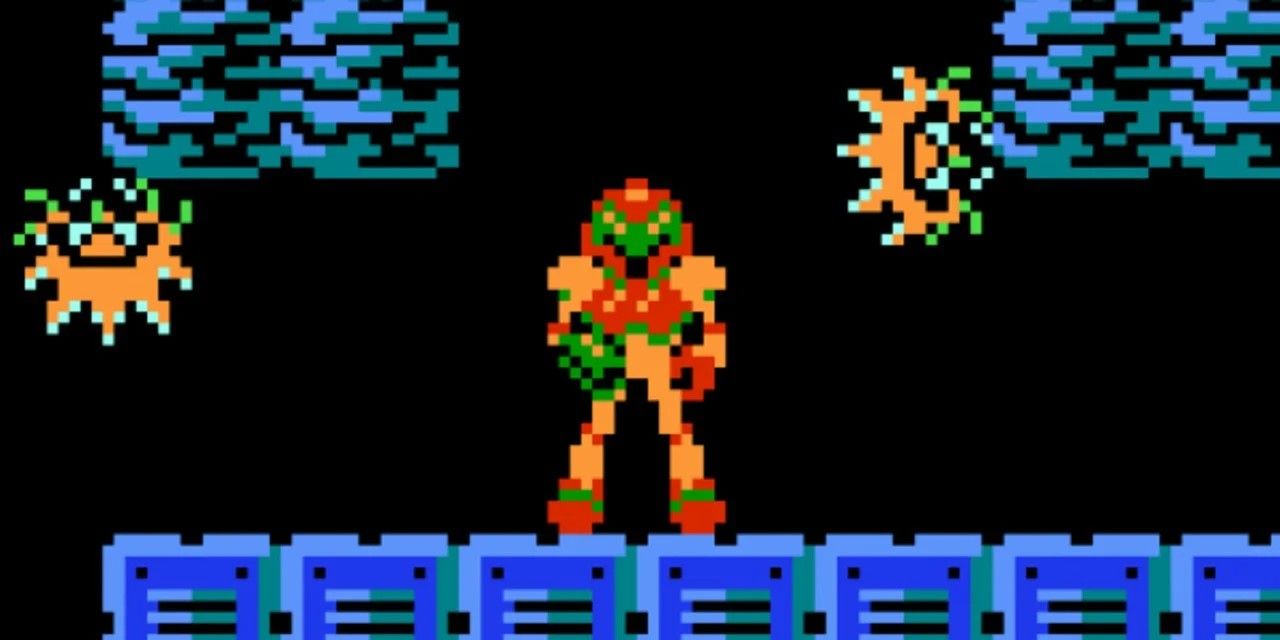Though major studios have a rocky history with Metroidvanias, these side-scrolling adventure-platformers have become one of the pillars of the indie scene. It seems like barely a week passes without a new game takes inspiration from Metroid and Castlevania, building a sprawling 2D world filled with nooks, crannies, alcoves, and even recesses.
This kind of game tends to be toward the challenging side, since Metroidvania progression relies on alternately disempowering and then empowering the player. But these particular ones really take the challenge to the next level.
10 Hollow Knight
Hollow Knight has become a phenomenon thanks to its combination of classic Metroidvania progression and tough-as-nails combat. Its world design owes a huge debt to classics like Super Metroid, but where that game's combat could feel sluggish, Hollow Knight pulls inspiration from Dark Souls to create battles that feel equally satisfying and punishing.
Since you can accidentally wander into areas with high-level enemies, you'll have to learn the ins and outs of the combat system pretty quickly.
9 La-Mulana
La-Mulana is one of the oldest games on this list, originally releasing in Japan in 2005. It was later ported to the defunct WiiWare service, before hitting the Switch in 2020. You'll control an archeologist exploring ancient ruins, attempting to uncover its mysteries.
La-Mulana sets itself apart from its genre contemporaries thanks to its focus on puzzle-solving - and those puzzles can be seriously obtuse, forcing you to pay attention to your surroundings and think outside the box to avoid death.
8 Environmental Station Alpha
One of the best parts of the Metroidvania genre is how high its skill ceiling is, allowing you to get better even after you beat the final boss. Environmental Station Alpha is a prime example of this dynamic.
The game is full of secrets and content that you can keep digging into even after you finish its main story, but doing so requires you to face off against some seriously tough enemies and challenges that feel decidedly old-school in their design. This is not a game that will hold your hand.
7 Salt And Sanctuary
You can't say that Salt and Sanctuary is subtle about its influences, pulling several elements directly from Dark Souls. But it executes those elements with such aplomb that it doesn't really matter - with plenty of depth and customization in its challenging combat.
And just like its forebears, Salt and Sanctuary can be incredibly difficult. If you don't get your character build right, you're in for a world of hurt.
6 An Untitled Story
Before creating the hits, Towerfall and Celeste, designer Maddy Thorson released a freeware Metroidvania called An Untitled Story back in the 2000s. And while Celeste is renowned for its difficulty, An Untitled Story is downright punishing.
You're cast as an egg that has fallen from its nest, journeying through a large and dangerous world. The game's difficulty comes mainly from its precise platforming challenges. One wrong step, and your egg is cooked.
5 A Robot Named Fight
Metroidvanias are fun but demanding experiences, since they demand a lot of your attention and memory. Roguelikes are fun but demanding experiences, testing your combat and resource management skills. A Robot Named Fight is what happens when you combine the two.
The game sets itself apart from the pack by randomizing its world layout every time you die, meaning that you'll have to relearn your surroundings with each run. Add in randomly-generated NPCs and shopkeepers that can hit you with unexpected curses, and you have a recipe for a truly challenging experience.
4 Dead Cells
Like the previous entry, Dead Cells blends Roguelike and Metroidvania qualities to produce a deeply hardcore experience. The game balances its elements in different ways, though. Its level order and power-up placement are roughly the same with each run, while level setup and enemy placement varies, so you'll always have a vague idea of where you are in terms of progression, but you'll have to respond to new threats quickly.
Its steep challenge is emphasized by a combat system that tests your reflexes and accumulated knowledge, and you'll undoubtedly need those skills to conquer the game's final boss.
3 Blasphemous
Blasphemous has one of the most distinctive art styles of any Metroidvania, drawing inspiration from Spanish Catholic iconography and gruesome artists like Francisco Goya. That brutal style is reflected in the game design, with combat that tests your reflexes and defensive skills; you can't go into encounters with guns blazing.
The game also lets you explore relatively freely and doesn't hold your hand, meaning that you can wind up in its hardest areas early on. Blasphemous is not for the faint of heart.
2 Rabi-Ribi
Rabi-Ribi has one of the cutest aesthetics on this list, casting you as an anime bunny girl in a pastel pixelated world. But don't be fooled by its friendly appearance.
Rabi-Ribi combines a basic Metroidvania structure with bullet-hell boss battles, and while it starts out on the easy side, the difficulty ramps up quickly. If you're looking for an even greater challenge, the game lets you increase its difficulty on the fly.
1 Metroid
It's fitting that the origin of the Metroidvania genre is also one of the hardest games of its kind. The first Metroid released back in 1986 and was an ambitious game hamstrung by the technical limitations of the NES; there was no in-game map, no direction on how to explore its world, obscure methods of progression, and a lot of similar looking environments.
But those limitations also led to a game that still feels mysterious and inviting, even today. There's a reason why so many games have followed in Metroid's footsteps.

.jpg)
